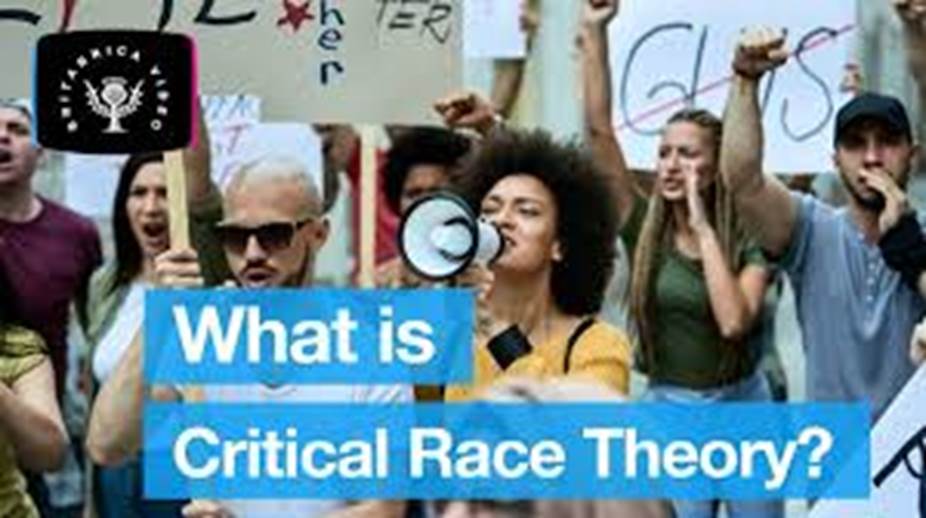

Critical Race Theory (CRT) researches the role of race and racism in society – Picture courtesy Encyclopedia Britannica
A Quick Primer on Critical Race Theory
By Mahasin D. Shamsid-Deen
US
The term “Critical Race Theory” (CRT) appears to be a new issue being used by politicians on both sides of the political aisle as a battering ram. However, it is not a new concept and the “controversy” around it is simply a manifestation of the very concepts that CRT examines.
What is Critical Race Theory?
- Critical Race Theory (CRT) researches the role of race and racism in society. It explores how the social construct of race and institutionalized racism in America preserves a racial caste system that relegates people of color to the lower tiers in the society. Most importantly, CRT authenticates that racism is real and that America is not living in a post-racist society just because of the civil rights movement or the election of people of color to political office. Instead, it exposes how the legacy and impact of land seizure, cultural genocide, slavery, segregation, and second-class citizenship on America’s people of color (POC) is an intricate and true component of the social fabric of this society and should be acknowledged as such by the larger society. Thus, opponents to CRT perpetuate the problem.
What are the components of Critical Race Theory?
- Race is a social construct. CRT asserts that “race” is the product of social thought and is not connected to biological reality. Thus, race in America was a political and social tool used to dominate and stratify.
- Racism is an element of American society . CRT recognizes that racism is intrinsic within society and has intersected with all aspects of American life. It is embedded in our institutions, legal, educational and social systems, and culture. CRT reveals that culturally, our thoughts, personal and professional relationships, as well as our educational and judicial systems are shaped by the impact of racism.
- The challenge to the dominant ideology . CRT argues that there is an ideological presence of superiority in society that perpetuates bias-making concepts like neutrality, objectivity, colorblindness and meritocracy difficult to achieve when dealing with America's ethnic minorities.
- The importance of lived experience. CRT focuses on the lived experiences of POC and how this is crucial to understanding racism and oppression. These experiences may be expressed through storytelling, family history, biographies, scenarios, parables, cuentos, chronicles, or narratives.
- The use of an interdisciplinary perspective. CRT draws from many different fields in order to create a powerful and nuanced framework for engaging with race and racism.
Is CRT new?
- The intellectual roots of what would become Critical Race Theory began in the ideas of legal realism scholars of the late 19th and early 20th centuries. Supreme Court Justice Oliver Wendell Holmes, jurisprudential scholar Karl Llewellyn, and Associate Supreme Court Justice Benjamin N. Cardozo were all proponents of legal realism, which is a theory that all law derives from prevailing social interests and public policy. According to this theory, judges consider not only abstract rules, but also social interests and public policy. From this, an examination of how laws were shaped by “interest convergence” is developed. For example, civil rights for ethnic minorities were only attainable when it converged with the social will of the majority.
Who wrote CRT?
- Critical Race Theory began in legal institutions in the 1970s. The architects of the theory were an ethnically and gender diverse group of civil rights lawyers, legal scholars, and university professors. That list includes the late civil rights lawyer and professor Derrick Bell, UCLA and Columbia Law Professor Kimberlé Crenshaw, UCLA Law Professor Cheryl Harris, legal scholar Professor Richard Delgado, legal scholar Professor Patricia Williams, pedagogical theorist Professor Gloria Ladson-Billings and Education Professor Tara Yosso, and others.
Is CRT just about ‘Black and White’ Americans?
- CRT is not a “Black” vs. “White” dichotomy. It reveals the impact of racism on the lived experiences of America’s ethnic minorities, including Latinx, Native Americans, and Asian-Americans. As a result, different branches, including LatCrit, TribalCrit, and AsianCRT have also evolved and are included within the total CRT frame of reference. Since CRT is constantly expanding and accumulating the experiences of America’s socio-ethnic minorities, additional branches will undoubtedly develop.
How was CRT developed?
- Civil rights lawyers are always tasked to look at the systems that exist within society that infringe on the rights of the human being. Critical Legal Studies (CLS) is a concept that argues that laws are not necessarily objective or apolitical. For example, Jim Crow laws, laws against interracial marriage, laws preventing integration in school and the workplace demonstrate a complicity in maintaining an unjust social system. CLS recognized that although race and racial inequality were reproduced within existent laws, laws themselves could and should be reframed to secure legal equality for all Americans.
How did this legal theory move to education?
- The natural outgrowth of examining institutionalized racism within the law, was to also examine how it was being taught to the society. It’s through America’s education system that we find some of the most disturbing demonstrations of racial injustice. There is an intersectionality of law and education. Legal cases like Plessy v. Ferguson of the late 1800’s or the 1950s Brown v. Board of Education involved over a century of legal challenges to the education system that categorically put Black Americans at a disadvantage and second-class citizenship in a manner that would not have occurred naturally. Within this problem also lies the fact that the standard American curriculum imposes a White narrative and perspective of history that excludes the history and lived experiences of all of America’s ethnic groups, thus perpetuating a systemic imbalance of educational equality.
https://www.soundvision.com/article/a-quick-primer-on-critical-race-theory?eType=EmailBlastContent&eId=06340d74-b7ee-4e78-aa33-056ea399c479&eType=EmailBlastContent&eId=1d24d53a-cebf-4913-94af-b8dddac2eaf1
|

